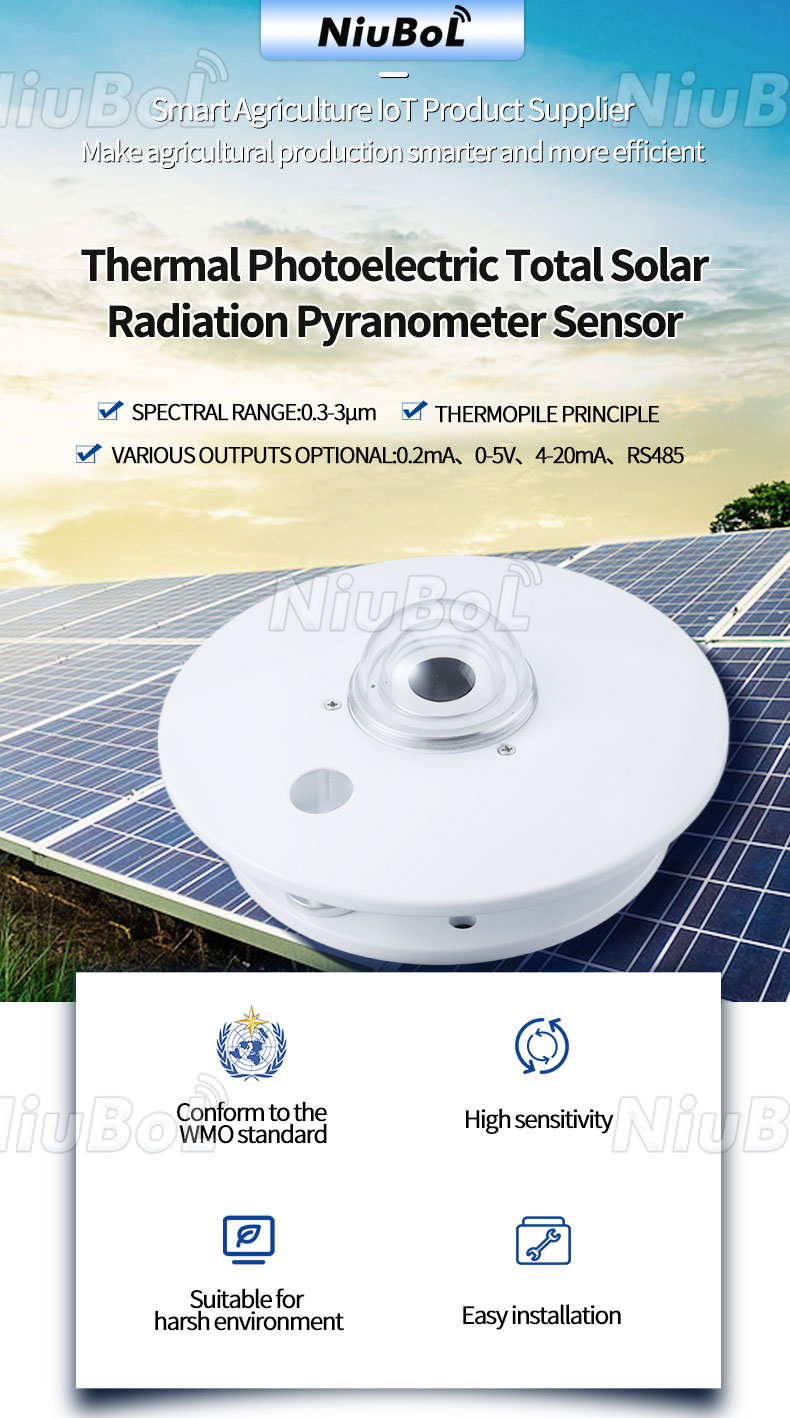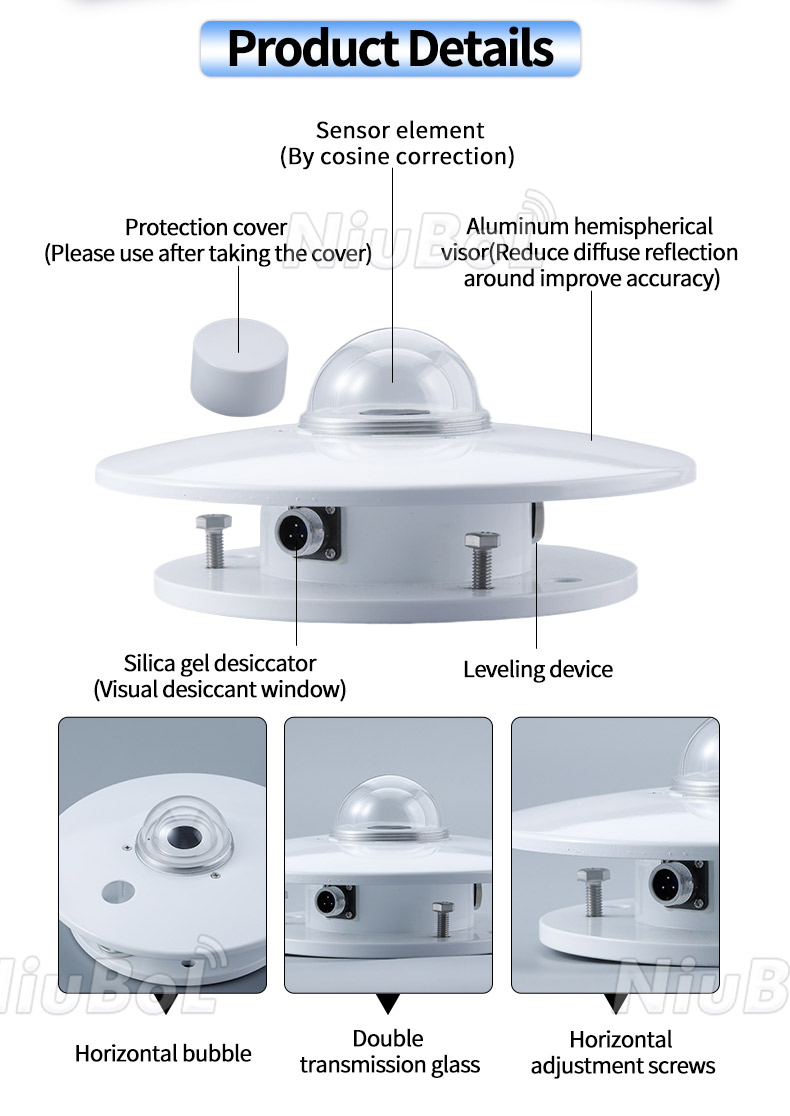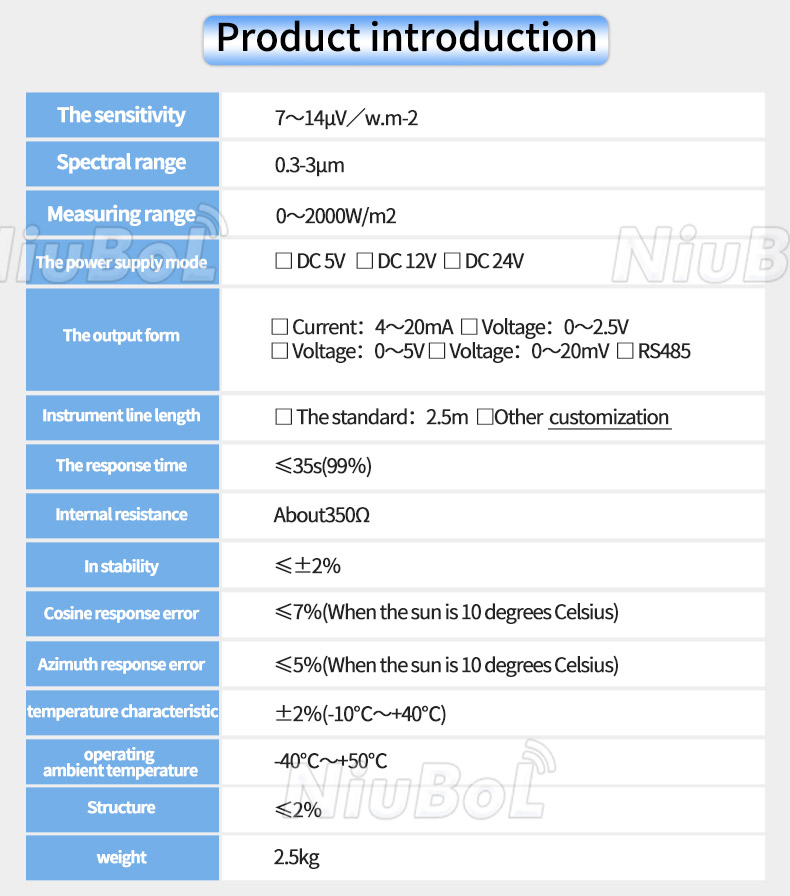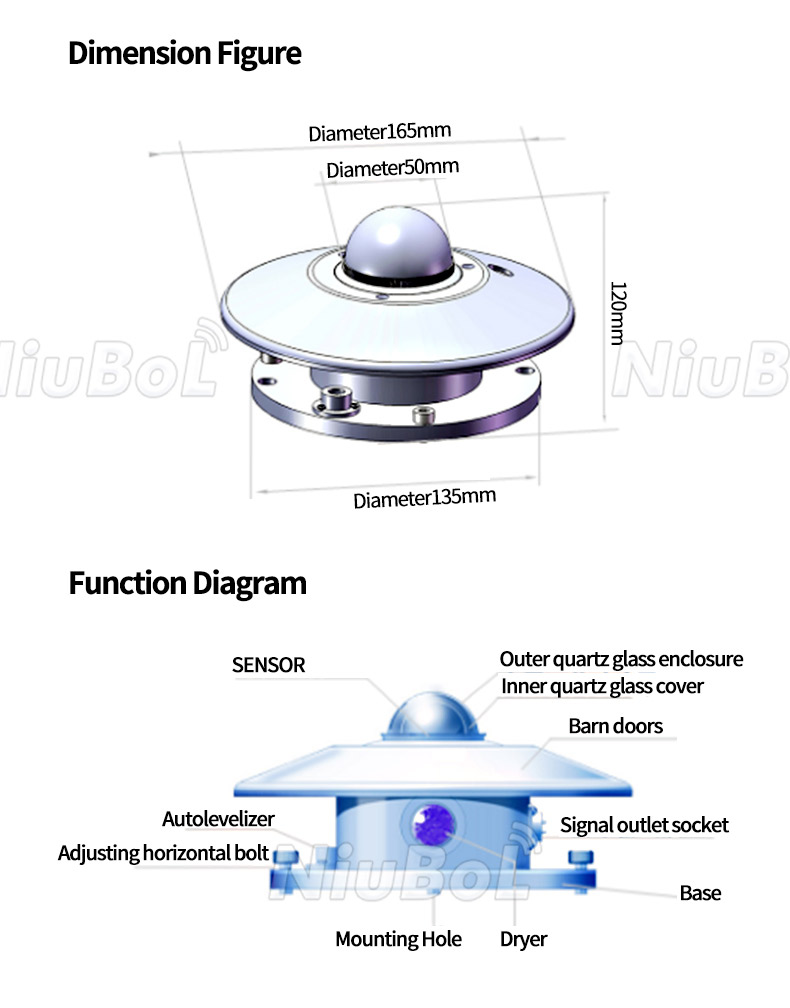

— Blogs —
—Products—
 Consumer hotline +8618073152920
Consumer hotline +8618073152920 WhatsApp:+8615367865107
Address:Room 102, District D, Houhu Industrial Park, Yuelu District, Changsha City, Hunan Province, China
Product knowledge
Time:2023-11-06 16:08:28 Popularity:1031
Pyrheliometer, irradiance, Hukseflux, pyrometer, and solar irradiance are all related to solar energy and meteorology but have different meanings and applications.
Pyrometer:
Pyrometers are instruments used to measure temperature by analyzing the radiation emitted from a target object. They are commonly used in various applications, including industrial process control, material testing, and scientific research. Pyrometers can be designed to measure temperatures over a wide range, depending on the specific application.




Pyrheliometer:
A pyrheliometer is an instrument used to measure the direct component of solar radiation. It is specifically designed to measure the intensity of solar radiation that reaches the Earth's surface through the clear sky, excluding the diffused component. Pyrheliometers are commonly used in meteorology, climate science, and solar energy research to assess the amount of solar energy that could be captured and used by photovoltaic (PV) systems or for other solar-powered applications.
Irradiance:
Irradiance refers to the rate of energy deposition in a given area, typically measured in watts per square meter (W/m²). It is a measure of the power density of solar radiation incident on a surface and is used to assess the potential energy generation from solar cells or panels in solar energy applications. Irradiance meters are used to measure the total solar radiation incident on a surface, including both direct sunlight and diffused light.
Hukseflux:
Hukseflux is a measurement unit used in meteorology to represent the rate of heat or energy transfer. It is a combination of heat flux and wind speed and is used to describe the heat transfer process between the Earth's surface and the atmosphere. Hukseflux is typically measured in watts per square meter per degree Celsius (W/m²·°C) and is used to assess heat transfer rates and energy balance in the Earth-atmosphere system.
Solar irradiance:
Solar irradiance refers to the total power density of solar radiation incident on a surface, typically measured in watts per square meter (W/m²). It represents the amount of solar energy received by a given surface area and is used to assess the potential energy generation from solar cells or panels in solar energy applications. Solar irradiance meters are used to measure the total solar radiation incident on a surface, including both direct sunlight and diffused light.
NBL-W-HPRS-Solar-Radiation-Sensor-Instruction-Manual-V3.0.pdf
NBL-W-SRS-Solar-radiation-sensor-instruction-manual-V4.0.pdf
Related recommendations
Sensors & Weather Stations Catalog
Agriculture Sensors and Weather Stations Catalog-NiuBoL.pdf
Weather Stations Catalog-NiuBoL.pdf
Related products
 Combined air temperature and relative humidity sensor
Combined air temperature and relative humidity sensor Soil Moisture Temperature sensor for irrigation
Soil Moisture Temperature sensor for irrigation Soil pH sensor RS485 soil Testing instrument soil ph meter for agriculture
Soil pH sensor RS485 soil Testing instrument soil ph meter for agriculture Wind Speed sensor Output Modbus/RS485/Analog/0-5V/4-20mA
Wind Speed sensor Output Modbus/RS485/Analog/0-5V/4-20mA Tipping bucket rain gauge for weather monitoring auto rainfall sensor RS485/Outdoor/stainless steel
Tipping bucket rain gauge for weather monitoring auto rainfall sensor RS485/Outdoor/stainless steel Pyranometer Solar Radiation Sensor 4-20mA/RS485
Pyranometer Solar Radiation Sensor 4-20mA/RS485
Screenshot, WhatsApp to identify the QR code
WhatsApp number:+8615367865107
(Click on WhatsApp to copy and add friends)
